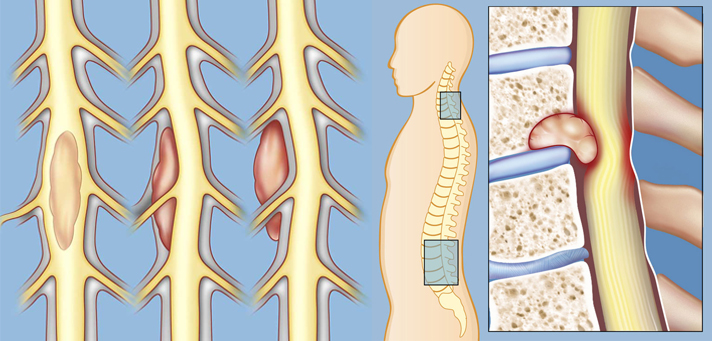It is possible for tumors to develop within the spinal canal. In some instances, they may form within the bones of the spine, which are referred to as vertebral tumors. Some of these growths are benign (non-cancerous) while others are cancerous. This article will focus on tumors that begin in the spinal cord themselves, referred to as spinal cord tumors.
Two Kinds of Spinal Tumors
According to medical authorities, there are a couple of kinds of tumors that may form in the spinal cord. First, there are intramedullary tumors. These growths form in the cells found within the spinal cord. Second, there are extramedullary tumors. Unlike the first kind of tumors, they develop outside the spinal cord, in particular within the network of cells that support it. Despite of this, these tumors may impede normal spinal cord functioning by applying pressure on them or causing any other problem.
Symptoms Experienced by Someone with the Condition
There are different symptoms caused by spinal cord tumors. They are dependent on the location of the growths as well as their size which could have an effect on the spinal cord itself or the surrounding blood vessels and nerves. Back pain that may radiate to various parts of the body is often experienced, and it’s also the earliest symptom of spinal cord tumors. The person with the condition may also experience loss of sensation in the extremities. Difficulty walking or loss of bladder or bowel function may take place too. Depending on where along the spinal cord the tumors develop, muscle weakness of varying degrees may occur.
When a Doctor Should be Consulted
It is said that a doctor should be consulted if the experienced back pain is not only persistent but also progressive. Seeing a specialist has to be done if the symptom is not related to physical activity or gets worse during bedtime. It’s important to be checked right away if you lose bladder or bowel function, or experience progressive numbness or weakness in the extremities.
Spinal Cord Tumor Complications
The loss of bladder or bowel function is actually one of the complications of spinal cord tumors. Loss of sensation or movement is possible at the level of the tumor as well as below it. Because the growths may compress the spinal cord and even cause permanent damage to the nerve, the problem can be life-threatening, depending on the tumor’s location.
Risk Factors for Spinal Cord Tumors
There are various spinal cord tumor risk factors — things that affect your chances of developing tumors in the spinal cord. According to experts, exposure to radiation is one of the most common environmental risk factors around. It is possible, in rare instances, for spinal cord tumors to run in families. Having a weak immune system is also regarded as a risk factor for spinal cord tumors.
Medical Treatments Available for the Condition
Completely eliminating the tumor is the goal of treating the condition. However, it’s not all the time that this is possible because it may be complicated by the risk of having the spinal cord or surrounding nerves permanently damaged along the way. In choosing the right treatment, your doctor will consider your age, overall health, and the location and severity of the problem. The following are the most common treatments for spinal cord tumors:
• Monitoring – Tumors that are benign or non-cancerous may require constant monitoring so that the necessary actions may be taken when alarming changes in the growths arise.
• Surgery – If the risk of having the tumor surgically removed is acceptable, this is usually the treatment of choice. Advancements in surgical removal of spinal tumors allow specialist to remove even growths in locations that were once inaccessible.
• Radiation therapy – This is often done to eliminate traces of tumors after surgery. Radiation therapy is also recommended for those with spinal cord tumors who are not eligible for surgery due to the risks involved.
• Chemotherapy – Certain medications are administered to stop cancerous cells or the tumors from developing or spreading. Sometimes chemotherapy is done in conjunction with radiation therapy.












